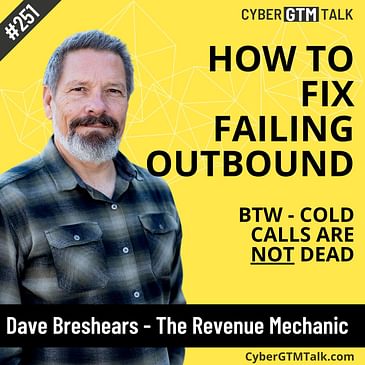Are your pipeline generation efforts falling flat? Is your team struggling with pipeline consistency and conversion rates? How aligned are your sales and marketing teams? How about SDRs?
In this episode of the Cybersecurity Go-To-Market Podcast, Dave Breshears sits down with host Andrew Monaghan to discuss proven strategies for boosting sales development performance, optimizing account engagement, and enhancing cross-functional team alignment.
In this conversation, we discuss:
👉 Strategies for consistent and effective outbound efforts in early-stage companies.
👉 The crucial role of phone competence and sustained pursuits in successful sales development.
👉 The importance of leaving voicemails to establish identity and engage potential customers.
About our guest:
Dave Breshears, known as the "revenue mechanic," specializes in identifying and fixing misalignments and inefficiencies within companies' revenue engines. With experience as both an SDR and enterprise sales professional, he brings practical insights into creating data-driven, programmatic sales development strategies.
Summary:
Join us as Dave Breshears shares invaluable advice on optimizing sales development efforts, aligning marketing and sales teams, and the pivotal role of phone calls in driving pipeline success. Tune in to learn how to apply these strategies to grow your cybersecurity business and ensure scalable success. Listen to the full episode now!
Links:
Connect with Dave Breshears on LinkedIn
OneView Labs's Website
Follow me on LinkedIn for regular posts about growing your cybersecurity startup
Want to grow your revenue faster? Check out my consulting and training
Need ideas about how to grow your pipeline? Sign up for my newsletter.




